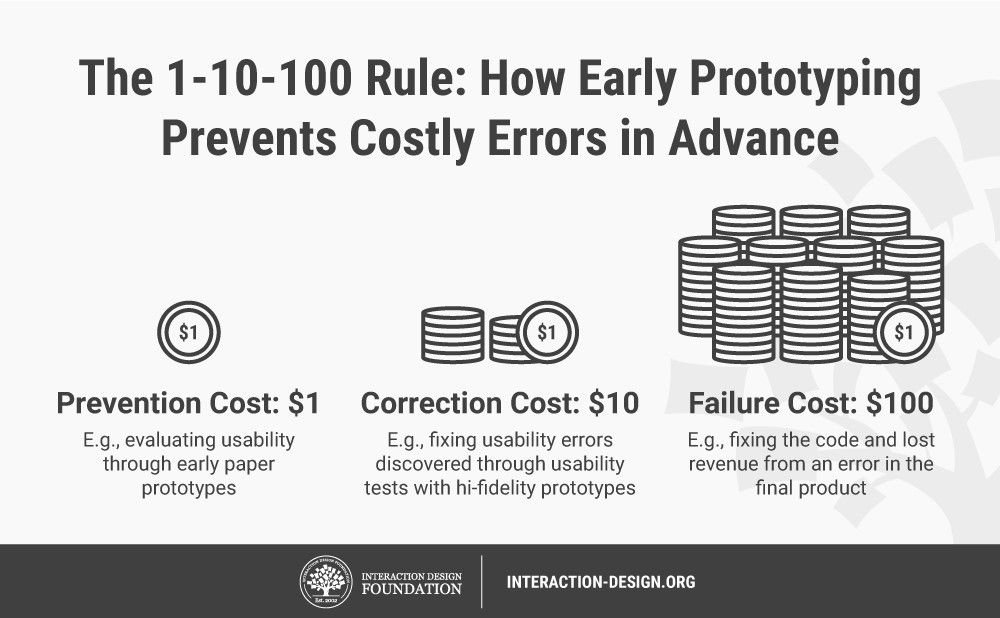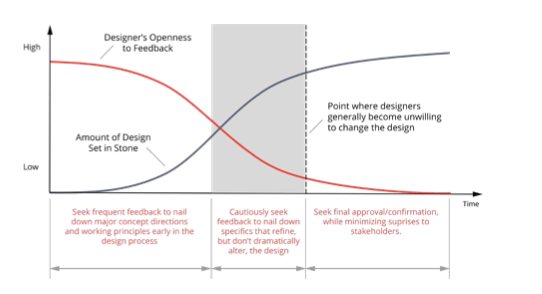A Spoonful of Paper Helps the Prototype Go Down
Prototyping. I may be crazy, but whenever I hear that word, I think about functional, pre-production models in the very latest stages of design. To me, prototypes were always the models whose initial concepts had been solidified and that were ready to move on to a final, refined design. What I’ve come to learn is that the prototyping stage can (and should) belong at the very beginning of the design process. This article will focus on the role that early prototyping – specifically paper prototyping – can play in developing strong designs.
Why Should we Care About Paper Prototyping?
Why is it so important to develop prototypes at the beginning of the design process? Wouldn’t that be expensive? Well, for starters, there are low-fidelity (think sketches, paper mockups, etc.) and high-fidelity prototypes (these are our pre-production models), the low-fidelity variants focusing mainly on user interaction and the high-fidelity versions emphasizing functionality. Developing and testing many low-fidelity prototypes while we’ve made relatively few design decisions is an inexpensive and invaluable way to both avoid runaway costs and produce better designs. Tim Brown, current CEO of IDEO said it best: “They slow us down to speed us up. By taking the time to prototype our ideas, we avoid costly mistakes such as becoming too complex too early and sticking with a weak idea for too long” [1]. To further emphasize my point, I’ll refer to the Interaction Design Foundation’s 1-10-100 rule. [1].
Mitigating exorbitant design costs is certainly essential, but beyond merely saving money, early prototyping is the most logical option; it makes sense to gather the most user feedback when we’re most open to it. Paper prototypes allow us to create inexpensive mockups to validate or correct our ideas. Simple — and most importantly, disposable — paper prototypes allow us to receive the design direction we need before committing to a design path. And when we do need to make improvements to our models, the next iteration is only a sheet of paper away.
How a designer’s openness to feedback changes over time [2].
2D Paper Prototypes
Successful prototyping begins in the ideation phase when brainstorming sessions lead to a high quantity of 2D paper prototypes (a.k.a. sketches). Consider your first sketch Prototype No. 1, but don’t stop there, no matter how good or bad the idea may be. “For engineers, it can be difficult to write down wild and random ideas when our training better prepares us for critiquing ideas. Most of my college assignments have been centered around ‘does this work’ or ‘how (strong, light, conductive) does this need to be to work’ instead of ‘give me as many imaginable ways this could work.’ Learn to momentarily suspend belief and give it a shot. You can realize for yourself that the more ideas you push yourself to have, the more good ones you’ll have.” [3]
Exploring a variety of concepts is most easily and quickly done through sketch prototypes [2].
Once you discover a good idea, save that sketch! It doesn’t need to be glamorous. Expect to gradually transition into higher-fidelity prototypes. Chris Mattson’s Loxo Rocket Engine is an excellent example of how an incredibly complicated final product that required over 100 hours of design work can begin as a simple sketch. [2]
The Loxo rocket engine design started with a sketch [2].
3D Paper Prototypes
While sketches are certainly invaluable, no drawing can simulate the space a product might occupy the same way a model does. 3D paper prototypes are simple models made by bending, folding, and binding paper or cardboard together. They allow us to quickly and inexpensively develop an idea of how our designs might look or feel in space. Even James Dyson’s revolutionary DC01 bagless vacuum began as a paper prototype.
James Dyson’s first cyclonic vacuum; a 3D paper prototype [4].
“In 1978, dissatisfied with the performance of his new Hoover Junior, James had an idea. He'd spotted a local sawmill using cyclone technology to separate sawdust particles from the air. Could this work on a vacuum cleaner? James ripped off his Hoover's clogging, stinking bag and replaced it with a crude cardboard prototype of his cyclone design - and it worked! James knew he was onto something, but it would take time to perfect his idea. Five years and 5,127 prototypes later, he created DC01, the world's first bagless vacuum cleaner” [5]. A successful prototype doesn’t need to be 3D printed or sent to a factory. If nothing else, Dyson’s vacuum illustrates just how powerful paper prototypes can be and how something as simple as a few sheets of cardboard can be the seed of incredible innovation.
Conclusion
Low-fidelity paper prototyping is an essential part of the design process. Whether in 2 or 3 dimensions, they allow us to save time and money, test concepts quickly, and diagnose problems early on. Our next product may not be the next Dyson vacuum, but a good paper prototype is certainly the first step to any legendary design.
References
[1] "Prototyping." Interaction Design Foundation, 8 Nov. 2022, www.interaction-design.org/literature/topics/prototyping.
[2] Mattson, Christopher. Introduction to Mechanical Design with CAD. Brigham Young University, 2020.
[3] McKinnon, Samuel. "Ideation Techniques: Assessing the Effectiveness of your Brainstorming Session." The BYU Design Review, 1 Aug. 2022, www.designreview.byu.edu/collections/ideation-techniques-assessing-the-effectiveness-of-your-brainstorming-session.
[5] "Our Story." The James Dyson Foundation, 8 Nov. 2022, www.jamesdysonfoundation.co.uk/who-we-are/our-story.html.
To cite this article:
Ashby, Derek. “A Spoonful of Paper Helps the Prototype Go Down.” The BYU Design Review, 11 Nov. 2022, https://www.designreview.byu.edu/collections/a-spoonful-of-paper-helps-the-prototype-go-down.










